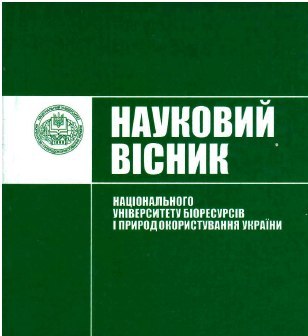Мethodology of linguistic description for names of green plantations
DOI:
https://doi.org/10.31548/philolog0(276).2017.071%20-%2079Abstract
Terminology is as young science, which gradually develops its methodological basis. The complexity of this process consists in the fact that the object of terminology is multi-sectoral terminology systems. This process can be described as multifaceted, heterogeneous. Different traditions, results, and consequences are typical of it.
The purpose is to describe the methodology and methodical tools for studying the botanical terminology system, in particular its subsystem – the names of green plantations.
Such methods as analysis, synthesis, generalization, systematization, and comparison were used.
Results. The study of any terminology occurs in stages. Based on the analysis of the current terminology works we emphasize four stages in the development of the terminology of a particular branch of knowledge:
1) inventory of available terms;
2) ordering and systematization of terms with the further harmonization of concepts and subsystems of concepts within the subject branch "botanical terminology", in particular the names of green plantations;
3) codification of terms;
4) standardization of terms.
Developing terminology, scientists simultaneously fix the current definitions and the contexts of their use. Analysis of the used definitions enables the development of a single interpretation, which contains the most significant signs of a definite concept.
Classification approach as an element of the descriptive method is widely used in the terminology of the description of language units. Terminologists use their own terminology, logical, linguistic classifications.
Terminological classification involves the division of terminology of the whole scientific system of a specific language on the term category; General scientific, general technical and interdisciplinary terms; special terms.
Terminological classification involves the division of terminology of the whole scientific system of a specific language on the term category; general scientific, general technical and interdisciplinary terms; special terms.
Conclusion.Determination of methodological and methodical tools for researching the names of green plantations, mastering them is a determining prerequisite for the solution of terminological problems, which under the influence of external and internal factors were clearly reoriented to the national-language plane. The outlined methodology and methods of terminological studies will contribute to solving the newest terminological challenges in the subsystem of the botanical terminology of the "names of green plantations". Further research will focus on the study of structural and statistical methods, the thematic research method, component and transformational analysis, and others. It will form a categorical apparatus and methodological tools of botanical terminology.
References
Artykutsa, N. V. (2012) Metodychnyi instrumentarii yurydychnoho terminoznavstva, Kyiv, Proceedings of NaUKMA.T. 129. Law studies. ‒ S. 53‒59.
Kocherhan, M.P. (2002) Introduction to linguistic studies: manual for students of philological specialties of educational establishments, Kyiv: Printing house
«Akademy», 368.
Lychuk, M. I., Zakhutska O. V. (2017) Linhvistychne opysuvannia dvokomponentnykh i trykomponentnykh biolohichnykh terminiv: strukturne modeliuvannia [Linguistic description of two component and three component biological terms: structural modelling].Naukovyi visnyk Natsionalnoho universytetu bioresursiv i pryrodokorystuvannia Ukrainy. Seriia: Filolohichni nauky, Scientific Herald of National University of Life and Environmental Sciences of Ukraine.Series: Philological Sciences/ Redkol.: S. M. Nikolaienko (vidp. red) ta in. – Kyiv. Milenium, Vyp. 272,84‒89.
Mezhenskyi, V. M. (2016) Do pytannia vporiadkuvannia ukrainskykh nazv roslyn deiakykh taksoniv pidtryb Malinae Reveal [To the issue of ordering Ukrainian names of plantations of some taksoniv pidtryb Malinae Reveal]/ The variety of plants.№ 1 (30), 5‒11.
Selivanova, O. O. (2008) Suchasna linhvistyka: napriamy ta problemy : navch. posibnyk [Modern linguistics: areas and issues]. Poltava -Kyiv, 2008, 712.
Selivanova, O. O. (2006) Suchasna linhvistyka terminolohichna entsyklopediia [Modern linguistics: terminological encyclopedia]. Poltava-Kyiv, 2006, 716.
Terminolohichna robota. Harmonizuvannia poniat i terminiv (2000) [Terminological work. Harmonization of notions and terms
] (ISO 860:1996, IDT) : DSTU ISO 860-99. Kyiv: Derzhstandart Ukrainy, IV, 8. (Derzhavnyi standart Ukrainy)
Terminolohichna robota. Zasady i pravyla rozroblennia standartiv na terminy ta vyznachennia (2009) [Terminological work. Standards and rules of compiling standards for terms and development of notions]: DSTU 3966:2009. Chernivtsi [Chynnyi vid 2010-07-01]. Kyiv: Derzhspozhyvstandart Ukrainy,37 s. (Natsionalni standarty Ukrainy).
Feshchenko, M. M. Normatyvnist botanichnykh terminiv [Norms of botanical terms] available at: http://kulturamovy.univ.kiev.ua/KM/pdfs/Magazine7-5.pdf
Kharchenko, S. V. (2009) Naukovo-tekhnichna terminolohiia: navch. posibnyk [Scientific technical terminology; manual]. Kyiv,112 s.
Shynkaruk, V., Tkach A. (2010) Slovotvirna identychnist ukrainskoi terminolohii: monohrafiia [Word-formation identity of Ukrainian terminology:monografia] . Chernivtsi, 200.
Iavorska, H. M. (2000) Preskryptyvna linhvistyka yak dyskurs: mova, kultura, vlada [Prescriptive linguistics as a discourse: language, culture, power. Kyiv.288.
Downloads
Published
Issue
Section
License
Relationship between right holders and users shall be governed by the terms of the license Creative Commons Attribution – non-commercial – Distribution On Same Conditions 4.0 international (CC BY-NC-SA 4.0):https://creativecommons.org/licenses/by-nc-sa/4.0/deed.uk
Authors who publish with this journal agree to the following terms:
- Authors retain copyright and grant the journal right of first publication with the work simultaneously licensed under a Creative Commons Attribution License that allows others to share the work with an acknowledgement of the work's authorship and initial publication in this journal.
- Authors are able to enter into separate, additional contractual arrangements for the non-exclusive distribution of the journal's published version of the work (e.g., post it to an institutional repository or publish it in a book), with an acknowledgement of its initial publication in this journal.
- Authors are permitted and encouraged to post their work online (e.g., in institutional repositories or on their website) prior to and during the submission process, as it can lead to productive exchanges, as well as earlier and greater citation of published work (See The Effect of Open Access).

